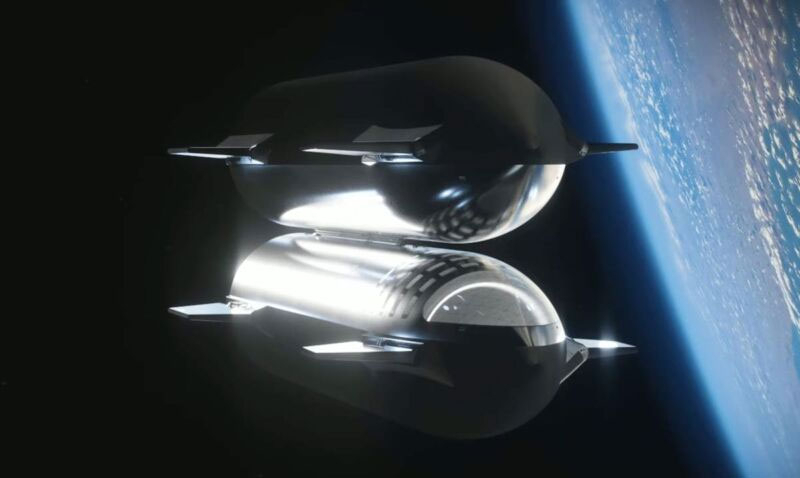One of the most important milestones on the path of man’s return to the Moon and for flights to Mars will be the development of refueling of the Starship ship in space. The company expects to begin the first tests of this kind in March 2025 and will continue until the summer. Successful refueling in space will allow NASA to approve the final version of the vehicle to deliver astronauts to the lunar surface in September 2026.

Artistic representation of ships refueling in space. Image source: SpaceX
About ten years ago, NASA signed a contract worth $4.05 billion with SpaceX to carry out two crew deliveries to the Moon. The landers for these missions will be modified Starships, the interior of which is currently being tested on mock-ups for final NASA approval next year. At the Boca Chica base, SpaceX is working closely with astronauts to create sleeping and work areas on the spacecraft. The astronauts will go to the Moon on the Orion spacecraft and the SLS rocket, and in satellite orbit they will transfer to the Starship and descend to the surface on it.
Since Starship is also an upper stage and will consume a lot of fuel to go into space on its own, it will need to be refueled in orbit so that there is enough fuel for the flight to the Moon and further maneuvers. Refueling should be carried out under low pressure with slight acceleration of the tanker and the ship being refueled. Before SpaceX, no one had conducted such maneuvers in space and these will be historic tests. If the technology turns out to be working, it will open the way for human flights to Mars and deeper into the solar system.
When concluding the contract with SpaceX, NASA used a variable cost payment principle. The company was given minimum requirements (27 of them) for the future Starship lunar spacecraft with the possibility of choosing design solutions. The downside of this flexible design approach was the unplanned costs required by the developer. In particular, NASA will pay for SpaceX to test a maneuver for refueling ships in orbit.
After testing the maneuver in the summer of 2025, NASA will conduct a critical review of the project (Critical Design Review, CDR), which will begin the production of production Starship ships for lunar missions. NASA still expects humans to land on the lunar surface in September 2026. According to agency representatives, there are no fundamental obstacles to this.